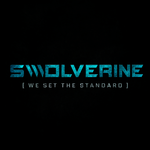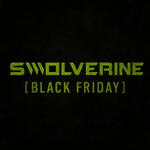Over the past decade, selective androgen receptor modulators (SARMs) like RAD-140 (Testolone) have gained huge popularity in bodybuilding circles. Marketed as a “safer” alternative to anabolic steroids, RAD-140 is often positioned as a compound that can deliver the benefits of testosterone without the harsh side effects. But does the science back up this claim — and more importantly, can RAD-140 actually replace testosterone?
To answer that, we need to understand how each compound works, what benefits they deliver, and what risks they carry. Testosterone is the primary male sex hormone, critical for muscle growth, strength, libido, and overall hormonal balance. It has decades of clinical research supporting its use in medicine and performance enhancement, but it also comes with well-documented side effects. RAD-140, on the other hand, is an experimental SARM designed to selectively target muscle and bone tissue, with the promise of building lean muscle without the systemic effects of traditional steroids.
In this guide, we’ll break down:
→ What testosterone and RAD-140 are, and how they work.
→ The benefits and risks of each compound.
→ Whether RAD-140 can truly serve as a testosterone replacement.
→ How athletes use them — individually, stacked, or post-cycle.
→ Legal status and health considerations you need to know.
By the end, you’ll have a science-backed understanding of RAD-140 vs. testosterone, so you can separate the hype from reality and make more informed decisions.
What is Testosterone?
Testosterone is the primary male sex hormone and one of the most important anabolic hormones in the human body. Produced mainly in the testes (and in smaller amounts by the ovaries and adrenal glands), testosterone regulates a wide range of biological functions — from muscle growth and fat distribution to libido, mood, and bone density.
In men, natural testosterone levels peak in early adulthood and gradually decline with age, which is why testosterone replacement therapy (TRT) is prescribed in cases of hypogonadism (clinically low testosterone). Outside of medical use, testosterone has a long history in bodybuilding and athletic performance as the foundational anabolic steroid for muscle mass and strength gains.
Role in the Body
→ Muscle Growth & Recovery: Testosterone stimulates muscle protein synthesis, the process by which the body builds and repairs muscle fibers after resistance training. Higher testosterone levels generally correlate with greater muscle growth potential.
→ Strength & Performance: By enhancing neuromuscular efficiency and recovery, testosterone allows athletes to train harder, recover faster, and progress more consistently.
→ Bone & Joint Health: Testosterone increases bone mineral density, reducing the risk of fractures and supporting heavy lifting over the long term.
→ Libido & Mood Regulation: Testosterone is also a critical driver of sexual health, energy levels, and overall mood stability.
Synthetic Testosterone in Bodybuilding
While testosterone is naturally produced, synthetic versions have been developed for medical and performance purposes. The most common forms include injectable testosterone esters such as:
→ Testosterone Cypionate
→ Testosterone Enanthate
→ Testosterone Propionate
These esters differ in half-life and dosing frequency but ultimately deliver the same hormone into the body. In bodybuilding, testosterone is often considered the “base” compound in nearly all steroid cycles, as it maintains normal physiological functions while supporting hypertrophy and performance.
Key Takeaway
Testosterone isn’t just a performance-enhancing drug — it’s a hormone essential to health, vitality, and long-term function. Any comparison with SARMs like RAD-140 must recognize that testosterone impacts the entire hormonal system, not just muscle and bone.
What is RAD-140 (Testolone)?
RAD-140, also known as Testolone, is a selective androgen receptor modulator (SARM) that was developed as an experimental treatment for conditions like muscle wasting, breast cancer, and age-related degeneration. Unlike anabolic steroids, which impact the entire endocrine system, SARMs are engineered to selectively bind to androgen receptors in muscle and bone tissue. The goal was to mimic the anabolic benefits of testosterone while minimizing unwanted effects on reproductive organs, the prostate, and cardiovascular health.
Mechanism of Action
RAD-140 works by binding to androgen receptors in skeletal muscle and bone, triggering protein synthesis and anabolic signaling. Early preclinical studies suggested that RAD-140 could promote lean muscle growth and bone strength without converting into estrogen or dihydrotestosterone (DHT) — two pathways responsible for many testosterone-related side effects.
Research Background
→ Initially developed by Radius Health Inc. as part of a pipeline of investigational SARMs.
→ Tested in animal models for neuroprotection, showing potential benefits in cognitive function.
→ Never advanced to FDA approval, with human clinical trials limited and largely unpublished.
Reputation in Bodybuilding
Despite its unfinished status as a pharmaceutical, RAD-140 quickly gained traction in the bodybuilding community. It is often marketed as a “testosterone alternative” because of its potential to build lean mass, increase strength, and accelerate recovery without the bloating or estrogenic effects associated with testosterone esters. However, because it is an unapproved drug sold only as a “research chemical,” quality control and long-term safety remain highly questionable.
Mechanism of Action: RAD-140 vs. Testosterone
While both testosterone and RAD-140 activate androgen receptors, the way they interact with the body is fundamentally different. Understanding this distinction is key to why RAD-140 cannot truly replace testosterone.
Testosterone
When administered naturally or synthetically, testosterone exerts systemic effects across multiple tissues:
→ Conversion to DHT: Through the enzyme 5-alpha reductase, testosterone is converted into dihydrotestosterone (DHT), a more potent androgen that influences prostate growth, hair follicles, and skin. This conversion is responsible for both desired effects (strength, sexual function) and common side effects (hair loss, acne, prostate enlargement).
→ Conversion to Estradiol: Via the aromatase enzyme, testosterone can convert into estradiol (estrogen). While excess estrogen can cause gynecomastia or water retention, it is also necessary for bone health, libido, and cardiovascular protection.
→ Broad Hormonal Cascade: Testosterone regulates not only muscle protein synthesis but also fertility, mood, red blood cell production, and overall endocrine balance.
RAD-140
RAD-140, in contrast, was designed for selective receptor activation:
→ Muscle & Bone Targeting: Preclinical studies show RAD-140 binds with high affinity to androgen receptors in skeletal muscle and bone, stimulating anabolic effects like hypertrophy and strength without significantly activating receptors in reproductive tissues.
→ No Aromatization: Unlike testosterone, RAD-140 does not convert to estrogen. While this may reduce risks like water retention and gynecomastia, it also eliminates the protective roles of estradiol in bone density and cardiovascular health.
→ Neuroprotective Potential: Animal models have indicated possible benefits for brain health, suggesting RAD-140 may protect neurons from degeneration, although this remains speculative without human data.
The Key Difference
Testosterone is a true hormone with systemic roles far beyond muscle growth, while RAD-140 is a receptor-specific agonist. Although RAD-140 can mimic some anabolic effects, it does not support fertility, libido, mood, or long-term endocrine health. This is why, despite its selective targeting, RAD-140 cannot replicate the full spectrum of testosterone’s biological functions.
Benefits of RAD-140 vs. Testosterone
Testosterone Benefits
1. Muscle Growth & Hypertrophy
Testosterone is the most reliable anabolic agent for muscle building. By binding to androgen receptors, it stimulates muscle protein synthesis, which repairs and enlarges fibers after resistance training. This makes it the backbone of nearly every performance-enhancing cycle.
2. Strength & Power Output
Testosterone improves the neuromuscular connection, enabling more efficient fiber recruitment during lifts. It also raises red blood cell production, which enhances oxygen delivery and endurance. The result is greater strength, higher training volume, and improved overall performance.
3. Recovery & Repair
Elevated testosterone reduces muscle breakdown and speeds up recovery. Athletes can train harder, bounce back faster, and progress more consistently — a major advantage over natural hormonal levels.
4. Libido, Mood & Energy
Testosterone affects more than just muscle. It supports sexual health, energy levels, and mood stability. Low testosterone often results in fatigue, irritability, and low motivation, while optimized levels enhance both mental and physical performance.
5. Bone Density & Joint Support
Through its conversion into estrogen, testosterone strengthens bones and supports joint health. This reduces the risk of injuries under heavy loads, making it essential for long-term lifting and athletic performance.
RAD-140 Benefits
1. Lean Muscle Gains
RAD-140 is valued for its ability to build dry, lean muscle mass. Because it does not convert into estrogen, gains are typically harder and more aesthetic, without the bloating often associated with testosterone cycles.
2. Strength Improvements
By binding strongly to androgen receptors in muscle, RAD-140 enhances anabolic activity that directly translates into noticeable strength increases. Many lifters experience faster progress on compound lifts while using it.
3. Fat Loss Synergy
RAD-140 doesn’t directly burn fat, but by promoting lean muscle growth, it raises basal metabolic rate. This means more calories burned at rest, which can support fat loss while preserving muscle during a cut.
4. Minimal Estrogenic Effects
Since RAD-140 does not aromatize into estrogen, it avoids common side effects like water retention, bloating, and gynecomastia. For bodybuilders seeking a clean, sharp look, this makes it appealing — though it also means missing out on some of estrogen’s protective health benefits.
5. Potential Neuroprotective Effects
Animal studies suggest RAD-140 may have neuroprotective properties, potentially supporting brain health. While unconfirmed in humans, this adds to its appeal as more than just a muscle-building compound.
Side Effects of RAD-140 vs. Testosterone
Testosterone Side Effects
1. Estrogen Conversion (Aromatization)
Testosterone can convert into estradiol (estrogen) through the aromatase enzyme. While some estrogen is necessary for bone health and libido, excess levels may cause water retention, bloating, and gynecomastia (male breast tissue growth).
2. DHT Conversion
Through the enzyme 5-alpha reductase, testosterone converts into dihydrotestosterone (DHT). This can contribute to acne, oily skin, hair loss in genetically prone individuals, and prostate enlargement.
3. Suppression of Natural Testosterone Production
When exogenous testosterone is introduced, the body reduces or shuts down its own production. This suppression can lead to testicular shrinkage, infertility, and long-term hormonal imbalances if post-cycle therapy is not used.
4. Cardiovascular Strain
Testosterone can negatively affect cholesterol levels by lowering HDL (good cholesterol) and raising LDL (bad cholesterol). Over time, this increases the risk of cardiovascular disease. Elevated red blood cell count also raises the risk of blood clotting.
5. Psychological and Emotional Effects
While testosterone often improves mood and confidence, supraphysiological doses can lead to irritability, aggression, and mood swings. Hormonal fluctuations during or after cycles may also trigger depression or low energy.
RAD-140 Side Effects
1. Natural Testosterone Suppression
Despite being marketed as “milder,” RAD-140 significantly suppresses the body’s natural testosterone production. This can leave users with low libido, fatigue, and hormonal imbalances once the cycle ends. Without PCT, recovery is often prolonged.
2. Liver Toxicity
Because RAD-140 is taken orally, it is processed by the liver. Prolonged or high doses may elevate liver enzymes, signaling hepatotoxicity. This risk increases if combined with other oral compounds.
3. Potential Cardiovascular Risks
Early evidence and anecdotal reports suggest RAD-140 may negatively affect cholesterol, similar to anabolic steroids. The long-term cardiovascular risks are not yet fully understood but remain a concern.
4. Unknown Long-Term Safety
Unlike testosterone, which has decades of clinical research, RAD-140 is still experimental. Its long-term safety profile in humans is unknown. Potential risks to fertility, endocrine health, and organ systems cannot yet be ruled out.
5. Limited Hormonal Support
While RAD-140 activates muscle androgen receptors, it does not convert into estrogen or DHT. This eliminates certain side effects, but also removes protective roles these hormones play in bone health, cardiovascular health, and libido. As a result, users may experience sexual dysfunction, low mood, or joint discomfort.
Risk Comparison
-
Testosterone: Side effects are well-documented and largely predictable, but they extend system-wide because testosterone affects every hormonal pathway.
-
RAD-140: Initially marketed as “safer,” but it carries its own risks — particularly suppression and unknown long-term effects. Lack of research makes its safety profile more uncertain than testosterone.
Stacking RAD-140 with Testosterone
In bodybuilding, RAD-140 is rarely used as a true replacement for testosterone. Instead, many athletes combine the two compounds to maximize muscle-building benefits while minimizing the limitations of each.
Why Stack Instead of Replace?
1. Hormonal Support
-
Testosterone is the body’s foundational androgen. It supports libido, mood, fertility, and overall endocrine health.
-
RAD-140, while anabolic, cannot replicate these systemic roles. Using RAD-140 without testosterone often leaves users with suppressed natural testosterone and the side effects of low T.
2. Complementary Anabolic Effects
-
Testosterone promotes broad anabolic growth, including muscle, bone density, and recovery.
-
RAD-140 selectively enhances lean muscle gains, often creating a “dry,” aesthetic look.
-
Together, they provide a balance of size, strength, and aesthetics that neither can achieve alone.
3. Cycle Flexibility
-
Testosterone is often used as the “base compound” in steroid cycles.
-
RAD-140 can be added for cutting phases (to maintain muscle while losing fat) or for recomposition (building lean tissue while staying relatively lean).
Common Stacking Approach
1. Testosterone Base
-
Kept at a moderate dose (e.g., 300–500 mg/week) to maintain normal androgenic and hormonal functions.
2. RAD-140 Add-On
-
Introduced at 10–20 mg per day for 6–8 weeks, depending on cycle goals.
-
Used to amplify lean gains, strength, and recovery without the bloating associated with higher testosterone doses.
3. Post-Cycle Therapy Considerations
-
Because both compounds suppress natural testosterone, stacking requires serious PCT planning.
-
Failing to run proper recovery protocols often results in prolonged suppression, low libido, and muscle loss post-cycle.
Stacking Takeaway
-
RAD-140 is best viewed as a complement to testosterone, not a substitute.
-
On its own, RAD-140 can leave users hormonally imbalanced.
-
In combination, testosterone provides systemic support while RAD-140 sharpens physique and performance outcomes.
Post-Cycle Therapy (PCT) Considerations
Whether using testosterone or RAD-140, both compounds suppress the body’s natural hormone production. Once a cycle ends, hormone levels crash unless active steps are taken to restore balance. This is where post-cycle therapy (PCT) becomes essential.
Testosterone PCT
1. Why It’s Needed
-
Exogenous testosterone shuts down natural production almost immediately.
-
Without intervention, users may experience low libido, fatigue, muscle loss, depression, and infertility.
2. Typical Protocols
-
Most testosterone cycles are followed by selective estrogen receptor modulators (SERMs) such as Clomid (Clomiphene Citrate) or Nolvadex (Tamoxifen).
-
These compounds stimulate the hypothalamus and pituitary gland, encouraging natural testosterone production to restart.
-
Aromatase inhibitors (AIs) may also be used if estrogen rebound is a concern.
3. Duration
-
PCT typically lasts 4–6 weeks, depending on the length and dosage of the testosterone cycle.
RAD-140 PCT
1. Why It’s Needed
-
Although SARMs like RAD-140 were marketed as “milder,” they still suppress natural testosterone production significantly.
-
Users often finish a RAD-140 cycle with symptoms similar to low testosterone: poor libido, low energy, and loss of muscle hardness.
2. Typical Protocols
-
Similar to testosterone cycles, RAD-140 cycles usually require a SERM-based PCT (Clomid or Nolvadex).
-
Dosages may be adjusted since RAD-140 suppression can vary based on cycle length and dose.
3. Duration
-
A RAD-140 PCT generally lasts 3–4 weeks, though more aggressive cycles may need longer recovery.
Key Comparison
-
Testosterone: PCT is non-negotiable. Without it, users face prolonged shutdown and long-term health issues.
-
RAD-140: Also requires PCT, despite marketing claims to the contrary. Skipping recovery protocols often leads to hormonal crashes.
-
Both Compounds: Neither can be run safely without planning a structured exit strategy that includes PCT.
Legal Status & Safety
Testosterone
1. Medical Legality
-
Testosterone is an FDA-approved medication prescribed for men with hypogonadism, low testosterone, or certain medical conditions.
-
It is classified as a Schedule III controlled substance in the United States, meaning possession without a prescription is illegal.
2. Athletic Regulation
-
Testosterone and all anabolic steroids are banned by professional sporting organizations, including the World Anti-Doping Agency (WADA) and the International Olympic Committee (IOC).
-
Athletes caught using it without a therapeutic use exemption (TUE) face suspensions or bans.
3. Safety Profile
-
Testosterone has decades of clinical research behind it, making its benefits and risks well understood.
-
While side effects are common with supraphysiological doses, medical supervision can help manage safety during therapeutic use.
RAD-140
1. Medical Legality
-
RAD-140 is not approved by the FDA or any major health authority for medical use.
-
It is sold only as a “research chemical” for laboratory study, making its purchase for human use a legal gray area.
2. Athletic Regulation
-
RAD-140 is explicitly listed on the WADA Prohibited Substances List under SARMs.
-
Athletes testing positive face the same penalties as those caught using anabolic steroids.
3. Safety Profile
-
Human trials of RAD-140 are extremely limited, and long-term safety is unknown.
-
Anecdotal reports highlight suppression, liver strain, and cardiovascular risks.
-
Lack of medical approval means there is no standardized dosing, purity testing, or clinical oversight.
Legal & Safety Comparison
-
Testosterone: Controlled but medically standardized; risks are well-documented and manageable under professional supervision.
-
RAD-140: Legally unapproved, banned in sports, and largely unregulated; risks are less predictable due to limited research and quality control.
Dosage Guide: RAD-140 vs. Testosterone
Testosterone (Medical & Performance)
1) TRT (clinical replacement, physician-supervised)
→ 100–200 mg/week of Testosterone Cypionate or Enanthate
→ Inject 1–2×/week (e.g., 100 mg once weekly or 50–60 mg 2×/week)
→ Goal is physiological range, not supraphysiological
2) Performance enhancement (informational only)
→ Beginner: 300–500 mg/week (10–12 weeks)
→ Intermediate: 500–750 mg/week (10–12 weeks)
→ Advanced: 750–1,000+ mg/week (higher risk; not advised)
→ Propionate: shorter ester; common practice is 50–100 mg EOD due to half-life
→ Consider an aromatase inhibitor only if labs/symptoms indicate excess estrogen
3) Timing & labs
→ Long esters (cyp/enan) = 1–2 injections/week; short esters (prop) = EOD
→ Monitor: Total/Free T, E2 (sensitive), CBC/HCT, lipid panel, LFTs, PSA
→ Hydration & periodic phlebotomy may be used medically to manage elevated hematocrit
RAD-140 (Testolone) (unapproved; research-chemical market)
1) Typical ranges seen in bodybuilding
→ Starting: 10 mg/day (6–8 weeks)
→ Standard: 15–20 mg/day (6–8 weeks)
→ High/aggressive: 20–30 mg/day (≤8–10 weeks; increases suppression/strain)
2) Administration
→ Once daily (≈16–20 h half-life); take at the same time each day
→ Optional split dosing only if GI upset; otherwise single daily dose is fine
3) Cycle length & time off
→ 6–8 weeks is common; avoid exceeding 10–12 weeks
→ Time off = at least time on + PCT (e.g., 8-week cycle → ~8 weeks off after PCT)
PCT Timing (brief add-on for clarity)
After Testosterone
→ Start ~14 days after last injection of cyp/enan (long esters); 3–5 days after prop
→ Common SERM examples (informational):
→ Tamoxifen (Nolvadex): 40 mg/day (wks 1–2), then 20 mg/day (wks 3–4)
→ Clomiphene (Clomid): 50 mg/day (wks 1–2), then 25 mg/day (wks 3–4)
After RAD-140
→ Start 1–2 days after last dose
→ Example SERM approaches (informational):
→ Tamoxifen: 20 mg/day (wks 1–2), then 10–20 mg/day (wks 3–4)
→ Clomiphene: 50 mg/day (wk 1), then 25 mg/day (wks 2–4)
Special notes
→ Women: Testosterone or RAD-140 use carries risk of virilization/menstrual disruption; medical oversight is essential.
→ Health & legality: Testosterone is a Schedule III drug (Rx only). RAD-140 is not FDA-approved; quality and purity vary. This content is educational and not medical advice.
Can RAD-140 Really Replace Testosterone?
At first glance, RAD-140 appears to be a modern alternative to testosterone — a compound designed to deliver anabolic benefits without the systemic side effects of traditional steroids. In practice, however, the idea that RAD-140 can truly replace testosterone is misleading.
1. Lack of Hormonal Support
-
Testosterone is not just an anabolic agent; it is the body’s primary male hormone, responsible for libido, fertility, mood, and overall vitality.
-
RAD-140 can stimulate muscle growth, but it cannot maintain these essential hormonal functions. Users often experience symptoms of low testosterone if RAD-140 is run without a test base.
2. Suppression Without Replacement
-
Both compounds suppress natural testosterone production, but testosterone supplies the body with a direct replacement hormone.
-
RAD-140 suppresses production without providing that replacement, leaving the user in a state of hormonal imbalance.
3. Limited Research & Safety
-
Testosterone has decades of medical research supporting its use, both clinically and in controlled performance enhancement.
-
RAD-140 remains experimental, with unknown long-term consequences and no established medical oversight.
4. Real-World Application
-
In bodybuilding, testosterone is almost always used as a base compound because it provides stability to the endocrine system.
-
RAD-140 is sometimes added for its lean muscle and strength-enhancing properties but is rarely used alone by experienced athletes.
Final Verdict
RAD-140 cannot replace testosterone. While it can mimic some of testosterone’s anabolic effects in muscle and bone, it lacks the systemic influence needed to maintain health, vitality, and hormonal balance. For this reason, athletes and bodybuilders use RAD-140 as a complement, not a substitute, for testosterone.
Conclusion
When comparing RAD-140 vs. testosterone, the differences come down to scope and reliability. Testosterone is the body’s primary male hormone, influencing everything from muscle growth and strength to libido, mood, recovery, and long-term health. Its benefits are broad, systemic, and well-studied, though they come with predictable side effects and strict legal controls.
RAD-140, on the other hand, is a targeted anabolic compound. It can deliver lean muscle gains, strength improvements, and a harder, drier physique without estrogen-related side effects. But its selectivity is also its limitation: RAD-140 cannot replicate the full hormonal support testosterone provides. Worse, it still suppresses natural testosterone production, leaving users at risk of hormonal imbalance when taken without a test base.
For bodybuilders and athletes, this means RAD-140 is best used as a supplementary tool alongside testosterone, not a replacement. Testosterone remains the foundation of performance enhancement, while RAD-140 offers an experimental edge for physique refinement.
In the end, the question isn’t “Can RAD-140 replace testosterone?” but rather “Does RAD-140 add value when stacked with testosterone?” — and the answer, for many, is yes.
FAQ: RAD-140 vs. Testosterone
1. Is RAD-140 safer than testosterone?
Not necessarily. While RAD-140 avoids estrogen-related side effects like bloating and gynecomastia, it still suppresses natural testosterone and may strain the liver. Testosterone’s risks are better understood because of decades of medical research, while RAD-140 remains experimental with unknown long-term effects.
2. Can RAD-140 be used for TRT instead of testosterone?
No. TRT (testosterone replacement therapy) restores normal hormonal balance in men with low testosterone. RAD-140 does not replace testosterone; it only stimulates muscle tissue selectively. Using RAD-140 as TRT would leave major gaps in hormonal health, including fertility, libido, and mood regulation.
3. Does RAD-140 cause hair loss like testosterone?
Hair loss from testosterone often comes from its conversion into DHT. Since RAD-140 does not convert to DHT, it is less likely to accelerate male-pattern baldness. However, androgen receptor stimulation itself can still affect hair in genetically predisposed individuals.
4. Do you need PCT after using RAD-140?
Yes. RAD-140 significantly suppresses natural testosterone production. A proper post-cycle therapy (PCT) with compounds like Clomid or Nolvadex is needed to restore normal hormonal function after a RAD-140 cycle.
5. Which is better for bulking — RAD-140 or testosterone?
Testosterone is superior for bulking because of its systemic effects on muscle growth, recovery, and performance. RAD-140 can support lean muscle gains and may be effective in cutting or recomposition cycles, but it cannot match the overall anabolic power of testosterone.







